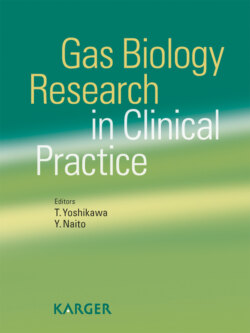Читать книгу Gas Biology Research in Clinical Practice - Группа авторов - Страница 39
На сайте Литреса книга снята с продажи.
Helium
ОглавлениеHelium is an odorless, tasteless, nonexplosive, noncombustible, nontoxic and physiologically inert gas and has been used safely in the treatment of respiratory disease since 1979 [26, 27]. It diffuses very rapidly to the target organs because of its low atomic weight. It is also nonreactive with body tissues and relatively insoluble in body fluid. The physical properties of helium such as its low density, laminar flow and low driving pressure decrease airway resistance making it an attractive treatment for respiratory diseases that involve a decrease in airway diameter and consequently increased airway resistance, such as bronchial asthma, chronic obstructive pulmonary disease and bronchiolitis. Patients with these conditions may suffer a range of symptoms including breathlessness, hypoxemia and eventually a weakening of the respiratory muscles, which can lead to respiratory failure requiring intubation and mechanical ventilation. Helium can reduce all these effects, making it easier for the patient to breathe by lowered airway resistance, thereby requiring less mechanical energy to ventilate the lungs. Helium is reported to increase in the coronary collateral circulation and enhance the vasodilator effect of inhaled nitric oxide on pulmonary vessels. The physical properties of helium may result in more efficient uptake oxygen and a facilitation of nitrogen egress from affected mitochondria in transient cerebral ischemia, both of which may explain its beneficial effects.
